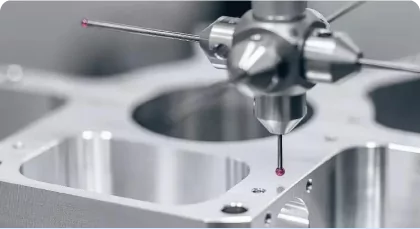Precision Part Manufacturing Services – High Accuracy, Fast Turnaround
When every micron matters, trust Alpha-Mold for reliable, high-quality precision part manufacturing. With over a decade of experience and advanced CNC machining and molding capabilities, we specialize in producing tight-tolerance parts for industries that demand the highest levels of precision.
Email: info@alpha-mold.com
WhatsApp: +86 158 1760 0962
What Is Precision Part Manufacturing?
Precision part manufacturing involves producing components with extremely accurate dimensions and tight tolerances, often to within ±0.01mm or less. These parts are critical for applications in:
Aerospace and aviation
Medical devices
Automotive systems
Electronics and robotics
Industrial automation
At Alpha-Mold, we use CNC machining, EDM, precision injection molding, and quality inspection systems to ensure every part meets exact specifications.
Why Choose Alpha-Mold for Precision Parts?
1. Advanced CNC Equipment
We operate multi-axis CNC machines, high-speed mills, and precision grinders capable of producing complex geometries in metal or plastic. From prototype to volume production, we deliver consistency at scale.
2. Tight Tolerances and Quality Control
We routinely manufacture components with tolerances as tight as ±0.005mm, supported by CMM (Coordinate Measuring Machine) inspection, visual analysis, and material certifications.
3. Material Versatility
We work with a wide range of materials including:
Stainless steel, aluminum, copper alloys
ABS, PC, PEEK, and other engineering plastics
Medical-grade and aerospace-certified materials
4. Global Delivery and Competitive Pricing
As a trusted precision part manufacturer in China, we provide competitive pricing and fast global shipping, whether you're in the USA, Europe, Australia, or Southeast Asia.
Our Key Services:
Custom precision CNC machining services
Small batch precision parts production
Plastic injection molding for precision components
Prototype to production part manufacturing
Custom metal parts with surface finishing (anodizing, plating, polishing)
Hot tag:
Precision part manufacturing services
Custom CNC precision parts supplier
Tight tolerance metal parts manufacturer
Precision plastic components factory China
Medical and aerospace precision part machining
High accuracy prototype part production
Industries We Serve
Medical Equipment: Implants, surgical tools, diagnostic housings
Aerospace: Brackets, housings, fluid fittings
Automotive: Transmission parts, sensor holders, engine components
Electronics: Connector shells, casings, terminals
Robotics & Automation: High-precision gears, bushings, linkages
Partner with Alpha-Mold Today
When it comes to precision part manufacturing, Alpha-Mold delivers the perfect blend of engineering expertise, quality assurance, and cost-efficiency. Whether you need prototypes or production runs, our team is ready to support your success.
Start your custom project now:
Email: info@alpha-mold.com
WhatsApp: +86 158 1760 0962
Fast Quotes | ISO-Standard Quality | Global Delivery








